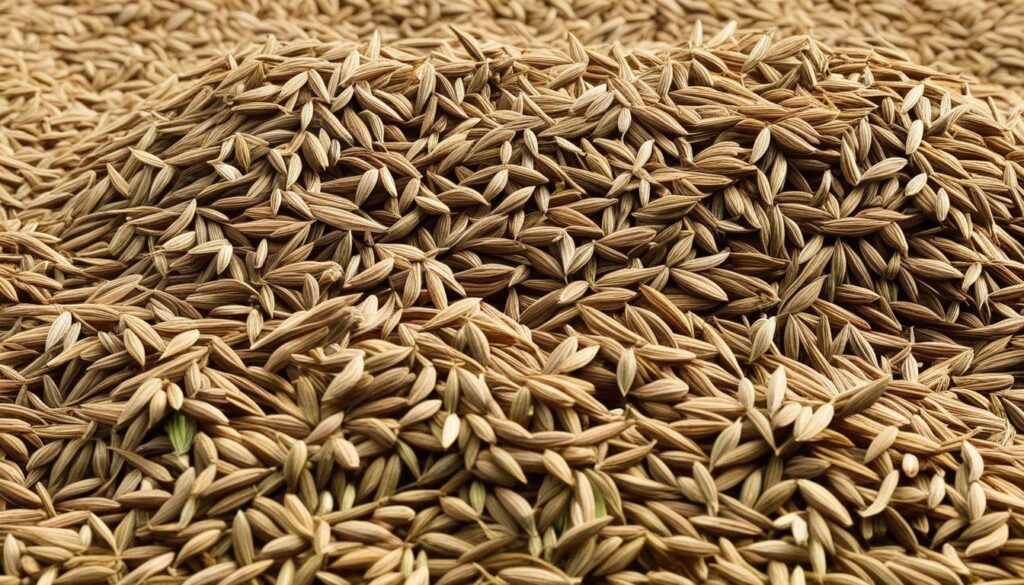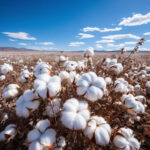
I. Introduction
A. Overview of Kump Singh and his unique approach B. Brief on the crops: sorghum, mung beans, pearl millet, black mustard seeds, Isabgol, and cumin
II. Kump Singh: A Visionary Farmer
A. Background and experience B. Land ownership and size C. Seasonal crops and the diversity of cultivation
III. Fertile Grounds: The Blend of Organic and Chemical Farming
A. Percentage allocation for cumin, Isabgol, and black mustard seeds B. Transition from chemical to organic farming C. Impact on yield and production expenses
IV. Crop Details and Market Value
A. Impressive cumin yield per bigha and market price B. Isabgol harvest quantity and estimated market value C. Cost comparison between cumin and Isabgol cultivation
V. Market Dynamics: Direct Purchase and Quality Assurance
A. Overview of Singh’s streamlined marketing process B. Direct inspection by purchasing entities C. Negotiation and quality checks for fair evaluations
VI. Nurturing Earth: The Organic Advocacy
A. Singh’s advocacy for organic farming B. Emphasis on the judicious use of organic and household manure C. Benefits for crop development and securing equitable market prices
VII. Conclusion
A. Recap of Kump Singh’s unique approach and success B. The importance of organic farming in the agricultural landscape
Introduction
In the vast expanse of agricultural endeavors, Kump Singh emerges as a pioneer, not only cultivating traditional crops but also transforming his fields into goldmines through black mustard seeds, Isabgol, and cumin. This article delves into the intricacies of Singh’s approach, seamlessly blending chemical and organic farming methodologies.
Kump Singh: A Visionary Farmer
Background and Experience
Kump Singh, a seasoned agriculturist in Baramsar village, Jaisalmer district, Rajasthan, brings a wealth of experience deeply rooted in farming since childhood. Armed with a Bachelor’s degree, he oversees a substantial family-owned expanse of 350 bighas of land.
Land Ownership and Size
Singh’s agricultural canvas features staples during the monsoon, such as sorghum, mung beans, and pearl millet. However, what sets him apart is the cultivation of black mustard seeds, Isabgol, and cumin, showcasing a diverse approach to farming.
Fertile Grounds: The Blend of Organic and Chemical Farming
Percentage Allocation for Crops
Singh allocates 70 percent of his land to cumin, 20 percent to Isabgol, and 10 percent to black mustard seeds. Initially entrenched in chemical farming practices, Singh’s journey took a transformative turn towards organic methodologies.
Impact on Yield and Expenses
This metamorphosis not only enhanced yield but also pruned down production expenses. Singh proudly shares that his cumin crop boasts an impressive yield of 70 kilograms per bigha, fetching a lucrative market price.

Crop Details and Market Value
Impressive Cumin Yield
In the current market scenario, cumin fetches Rs 5000 per kilogram in Singh’s region, making it a highly profitable venture. The Isabgol harvest, ranging from one to one-and-a-half quintals per bigha, commands an estimated value of around Rs 24,000.
Cost Comparison
Notably, Singh underscores that while cultivating cumin incurs relatively higher costs, Isabgol farming manages to keep expenses slightly more economical, offering a balanced approach to his agricultural pursuits.
Market Dynamics: Direct Purchase and Quality Assurance
Streamlined Marketing Process
In the realm of marketing, Singh discloses a streamlined process where representatives from purchasing entities directly inspect their fields. The pricing negotiation ensues, facilitated by a fair evaluation of the crop’s worth.
Quality Checks for Fair Evaluations
However, this streamlined approach necessitates an initial submission of crop samples to the purchasing companies. Only upon successfully passing the stringent quality checks do the representatives extend offers for the harvest, ensuring transparency and fair trade practices.
Nurturing Earth: The Organic Advocacy
Advocacy for Organic Farming
Through the platform of Krishi Jagran, Singh advocates for a shift towards organic farming, emphasizing the judicious use of organic and household manure. This, he contends, not only fosters robust crop development but also secures equitable market prices for farmers.
A Greener, More Prosperous Agricultural Future
A call to fellow cultivators to embrace sustainable practices resonates in Singh’s advocacy for a greener, more prosperous agricultural future. His success story serves as an inspiration for those looking to balance profitability with environmental consciousness.
Conclusion
In conclusion, Kump Singh’s unique approach to farming, seamlessly blending chemical and organic methodologies, has transformed his fields into goldmines. The success of his cumin, Isabgol, and black mustard seed cultivation showcases the potential for a balanced and profitable agricultural landscape.
FAQs
- How did Kump Singh transition from chemical to organic farming? Singh’s journey towards organic farming was a transformative turn influenced by the desire for enhanced yield and reduced production expenses.
- What is the market value of Singh’s cumin crop? In the current market scenario, cumin fetches Rs 5000 per kilogram in Singh’s region, making it a highly profitable venture.
- How does Singh ensure quality in his crops for direct purchase? Singh follows a streamlined marketing process where representatives directly inspect fields, and quality checks are stringent before extending offers.
- Why does Singh advocate for organic farming? Singh believes in the judicious use of organic and household manure, fostering robust crop development and securing equitable market prices for farmers.
- What crops contribute to Singh’s diverse agricultural landscape? Singh cultivates a variety of crops, including sorghum, mung beans, pearl millet, black mustard seeds, Isabgol, and cumin, showcasing a well-rounded approach to farming.









